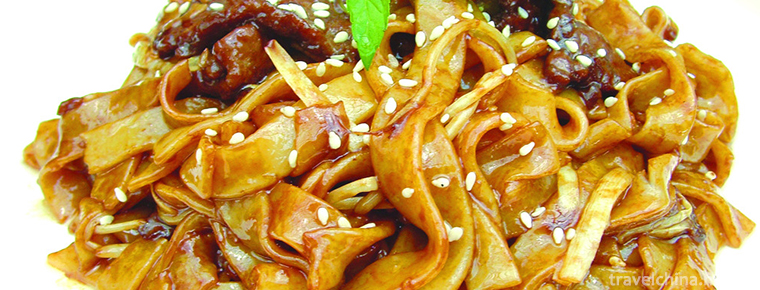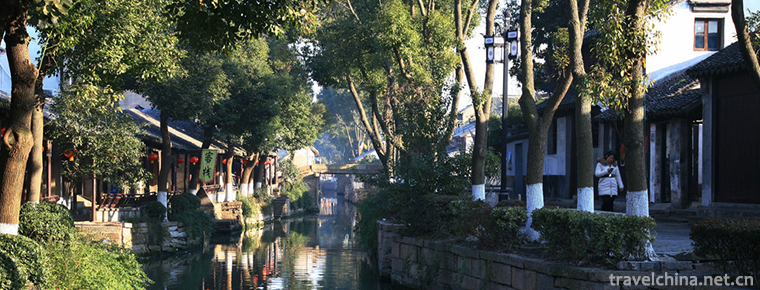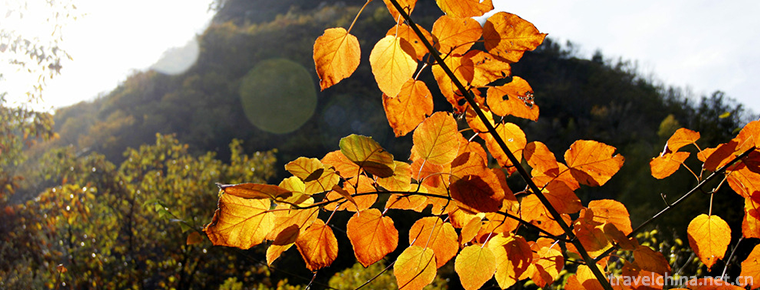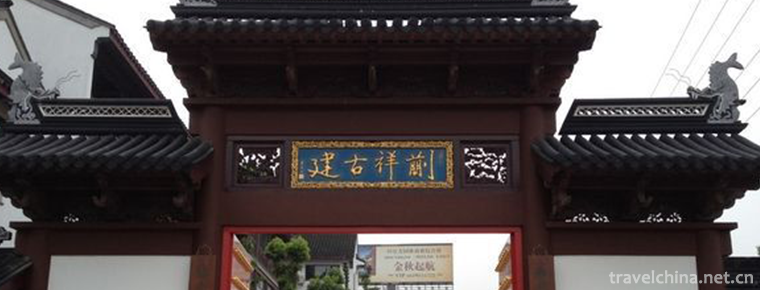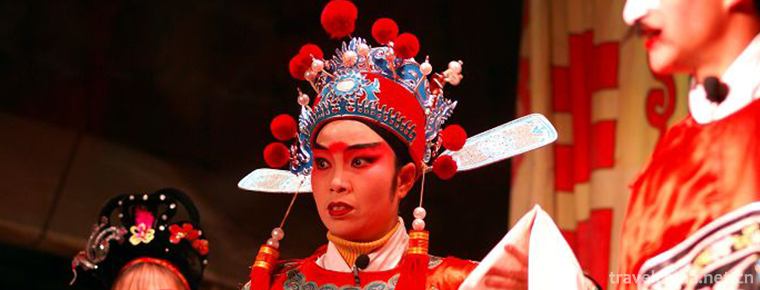The Craft of Juchunyuan Buddha Jumping Wall
The Craft of Juchunyuan Buddha Jumping Wall
"Buddha Jumping Wall" is the first famous dish in Fujian cuisine. It is well-known at home and abroad for its exquisite materials, unique preparation method and strong flavor. This dish is well-known, but also related to its magical legend. That was more than 140 years ago. It is said that an unknown monk visited a restaurant adjacent to his monastery in Fujian where he preached Buddhist scriptures and propagated Buddhism. Sometimes a dish emitted a peculiar fragrance, which made him foolish. Finally, one day, he could not hold back, jumped over the wall, feasted, and even broke the rules. Legend has not been passed down, but it is spread among the people, which fully illustrates the enduring charm of the Buddha jumping wall dish.
On June 7, 2008, Juchunyuan Buddha Jumping Wall was listed in the second batch of national intangible cultural heritage list with the approval of the State Council.
Orion of the Name
There are different opinions on the origin of Buddha's jumping wall. Whether it's the old beggar who used hundreds of meals, the little monk who wanted to make a tooth sacrifice, or the lady and sister in the official family who used a pot of delicious stewed food prepared by her mother in the panic... There are occasions of self-defeating. In fact, Buddha's jumping wall can be traced in history. In 1876 (the second year of Guangxu in Qing Dynasty), an official of Fuzhou Bureau of government and money invited Zhou Lian, Fujian envoy of cloth administration, whose Shaoxing wife cooked a dish stewed in Shaoxing wine jar with selected abalones, ginseng, wings and stomach, named "Fushouquan". Zhou Lianpin praised it. After Zheng Chunfa's "Sanyou Zhai" improvement, he became a noble official at that time, and a necessary dish for the gathering of literati and Mohists. Once, after tasting it, Yixiu Caicai wrote poems: "The incense of water chestnuts floats around the altar, Buddha Wen abandons the Zen Jumping Wall" and named it "Buddha Jumping Wall".
Technical history
The history of "Buddha jumping wall" can be textually studied, and it has been more than 200 years since then. During the Qing Dynasty, Zheng Chunfa of Fuzhou Juchunyuan Restaurant was famous for cooking this dish. Zheng Chunfa was formerly a cook in Zhou Lianfu, the Chief Secretary of the Qing Dynasty. One day, Zhou Lian was invited to a dinner for the owner of the biggest local money bank. The owner of the bank has always had an excellent cooking skill. On that day, in order to show off his skill, he took the opportunity to butter up Zhou Lian, and then showed his specialty dishes, which imitated those of the ancients who cooked vegetables in wine jars. After the dish was served, it opened the lid of the altar and immediately overflowed with fragrance, making people salivate and swallow liquid. It was eaten straight up to the bottom of the altar. Zhou Lian still could not bear to put down her chopsticks. After returning home, he painted a vivid description of the shape and taste of Zheng Chunfa's dish. Zheng Chunfa, with a strong heart, tried and adjusted repeatedly according to the materials, cooking methods and the color, aroma and shape of the finished dishes mentioned by Zhou Lian. Finally, he felt that he had reached the ideal state, and offered Zhou Lian this delicate delicacy. Zhou Lian did not eat it, but once she had eaten it, she shouted at the table, praising Zheng Chunfa for his ingenuity and cultivation. Zheng was not satisfied with drawing gourds according to the same pattern, but kept pondering later. The main ingredients were not rigid, and the auxiliary ingredients were added with proper mountain and seafood. The processing methods were adapted to the material conditions. After a number of processes, finally, Shaoxing wine was used to simmer the gourds. The effect was much better than that of the owner of Qianzhuang.
The vicissitudes of life, Zhou Lian later broke down, Zheng Chunfa also left the Secretary of Bureaucracy. In order to live, I opened Juchunyuan Restaurant, which took the dishes developed for many years as the signature dishes, and soon became famous. Suddenly, several talented people came to enjoy the famous dish. When the second year of the shop held out an old wine jar and invited guests to open it for enjoyment, Xiu Cai not only ignored it, but also laughed at the old jar. The courteous sophomore went up and opened the lid of the altar. The stuffy fragrance came to his nose. The frivolous talents immediately put down their shelves, stretched out their heads, sniffed their noses, and drooled, calling them exotic and beautiful. One blurted out, "Even if the Buddha heard the fragrance of vegetables, he would jump over the wall and break the precepts and steal them." Another asked about the name of the dish, and the second child of the shop answered, "Jar cooking". Xiu Cailian shook his head repeatedly: too straight, too vulgar, not elegant, so he improvised and sang, "The incense of the dishes is floating around the altar, Buddha heard abandoning the Zen wall." The dish is named "Buddha Jumping Wall" as the most soulful dish. From then on, "pot stewed vegetables" will be "Buddha jumping wall" nicknamed.
Application scope
Anhui Min, Director of the Work Committee of China's Old Brands, introduced that more than 270 old-brand enterprises participated in the Expo. Nearly 90% of them were "Chinese Old Brand" enterprises recognized by the former Ministry of Domestic Trade and Ministry of Commerce. They are located in Beijing, Shanghai, Hong Kong and Taiwan, covering many industries such as food, crafts, cultural goods, traditional Chinese medicine and clothing, and basically covering the main domestic old-brand gatherings. The local characteristic flavor of the market area.
Mrs. Cheng, who lives in Fangzhuang, said she came to the Agricultural Exhibition Hall early in the morning. After visiting the South China Exhibition Area, she had "harvested a lot" and bought three big bags. "I buy the most snacks from all over the country, because this time the old-fashioned enterprises are selected by local associations. They are sure to have pure taste and buy with confidence." Mrs. Cheng said.
Reporters at the exhibition site saw that most of the exhibited products are famous and exquisite products all over the country, such as silk in Hangzhou, cosmetics in Yangzhou, fish balls in Guangdong, Sanhua wine in Guangxi, beef in Shanxi, and so on. Food enterprises accounted for more than 60%. Many enterprises also exhibited their unique skills at the Expo. Douyun Xuan's wood watermarking skills, Wang Yipin's Lake pen making skills, Zhang Xiaoquan's scissors inlaid with steel forging skills and other old-name watchers were all exhibited at the exhibition.
Circulation of skills
In Fujian cuisine, there are not only people's Jiangye snacks, but also the first banquet of the temple and temple. Buddha jumps the wall, which is the master of Fujian cuisine. It was born that year, and it became famous all over the world. In those years, the Buddha jumping wall was not called the Buddha jumping wall. During the Qing Guangxu period, the Fujian Buzheng envoy, Zhou Lianxinguan, took office. The Fuzhou Bureau of Government and Money received instructions to wash away the dust for him and let the wife of Shaoxing, her ancestral home, knife the chef herself to show her sincerity. Mrs. Yang used the Shaoxing wine jar as a container, filled with chicken, duck, mutton, pork belly, pigeon eggs and seafood and other 18 kinds of raw and auxiliary materials, and then simmered them for three days and three nights. On the day of the family banquet, Zhou Lian was first attracted by buckwheat incense, and then enjoyed it at the table, and she was full of praise. Asked about the name of the dish, the name is "Fushouquan".
Making method
Raw materials: Shark fin, lip, stomach, abalone, sea cucumber, dried scallop, chicken, duck, elbow, ham, pork hoof tendon, mushroom, winter bamboo shoots and other appropriate amount.
Condiments: Cinnamon, sugar, Shaojiu, soy sauce, each appropriate amount.
Method:
The raw materials were prepared separately and placed in Shaoxing wine jar at different levels with seasoning to seal the lotus leaf.
(2) The altar is set on a charcoal fire and boiled, then simmered slowly with a gentle fire. The original altar is served, uncovered, and oiled pigeon eggs are served in a small altar.
Features: Food is diverse, soft, waxy, crisp and tender, rich in buckwheat, delicious soup, delicious taste, endless aftertaste, rich in nutrients, and can clearly nourish the face, promote blood circulation and muscle, nourish yin and nourish the body, improve food
Home Cooking
Main material
Ray fin (30g), abalone (15g), dried Yao Zhu (10g), shrimp meat (15g), quail eggs (20g)
Seasoning
Fresh winter bamboo shoots (10g), mushrooms (15g), cooked chicken (20g), ginger (5g), Shaoxing flower carving wine (50ml), soup (150ml) salt (1g) white pepper (a little)
Traditional dishes
Fotiaoqiang, a famous traditional dish in Fuzhou, has a history of more than 100 years so far. It was developed by Zheng Chunfa, the owner of Juchunyuan Restaurant. In 1965 and 1980 in Guangzhou Nanyuan and Hong Kong respectively, Fuzhou cuisine, which mainly cooks Buddha's jumping wall, caused a sensation and set off Buddha's jumping wall fever all over the world. Overseas Chinese restaurants around the country often use self-proclaimed authentic Buddhist wall-jumping dishes to attract customers. Fo Tiaoqiang also attended the state banquet hosted by Prince Sihanouk, President Reagan, Queen Elizabeth and other heads of state, and was greatly appreciated, making this dish even more famous in the world.
The original name of Buddha Jumping Wall is "Fushouquan". In the twenty-fifth year of Guangxu (1899), an official of Fuzhou Bureau of Government and Money invited Zhou Lian, Fujian's Minister of cloth and politics, to make friends with Zhou Lian and make his relatives cook independently. He cooked chicken, duck, mutton, pork belly, pigeon eggs and seafood in Shaoxing wine jar with more than 10 kinds of raw materials and accessories, and took the name Fushouquan. After Zhou Lian tasted it, she was full of praise. Asked about the name of the dish, the official said that the dish took the meaning of "good luck, good luck and longevity" and was named "good luck and longevity". Later, the chef Zheng Chunfa learned how to cook this dish and improved it. The taste was better than the first one. When Zheng Chunfa opened the "Juchunyuan" restaurant, it caused a sensation in Rongcheng. Once, a group of literati and ink visitors came to taste this dish. When Fushouquan attended the opening altar, buckwheat fragrance overflowed. One of them was fascinated by the spirit of a scholar, which triggered the poetry. He immediately chanted in a roaring voice, "The altar is open and the buckwheat fragrance is floating around, and Buddha heard abandoning the Zen wall." At the same time, in Fuzhou dialect, the pronunciation of "Fushouquan" is similar to that of "Buddha Jumping Wall". Since then, people have quoted poetry, commonly called this dish "Buddha jumping wall".
Folklore
There are many opinions about the origin of this dish. According to Mr. Fei Xiaotong, the inventor of this dish was a group of beggars. These beggars, carrying broken pots and cans, go everywhere to have meals every day and put all kinds of leftovers in the restaurant together.
It is said that one day, when a restaurant owner went out, he happened to smell a strange fragrance coming from the street. He escaped from the fragrance and found that the leftovers in the broken pot were poured together with all kinds of leftovers. The owner was enlightened by this. He returned to the store and mixed all kinds of raw materials into an urn, with wine, to create a Buddha jumping wall.
Second, there is a rule in Fujian custom called "try kitchen". According to this rule, the bride-in-law must go to her husband's house on the first day, the second day, and the third day to try cooking in public. This is a test of her housekeeping skills.
Legend has it that a spoiled young woman can't cook. Before getting married, she was worried about the coming kitchen test. Mother tried her best for her daughter. Finally, she found out all the precious seafood in the house. After one preparation, she packed lotus leaves into small bags and repeatedly told her daughter how to cook all kinds of raw materials. Who knows that the bride arrived the day before the trial kitchen, in a panic, she forgot all kinds of cooking methods. She arrived at the kitchen in the evening, unpacked all kinds of raw materials her mother had packed, piled up a table that she couldn't get started, and listened to her parents-in-law coming into the kitchen when she could not do anything about it. The new daughter-in-law was afraid of being picky. She saw a wine jar beside the table. She hurried to put all the raw materials into the jar. She had to wrap the lotus leaf of the raw materials around the jar by hand, and put the wine jar on a fast-fire stove. Think about the kitchen test tomorrow, the new daughter-in-law, afraid she can not cope with, quietly slipped back to her mother's home. The next day, all the guests arrived, but they did not see their new daughter-in-law. My parents-in-law went into the kitchen and found that there was a wine jar on the stove, which was still hot. As soon as the lid was lifted, the fragrance overflowed, and the guests all shouted in unison when they smelled the fragrance, which became the Buddha's jumping wall.
Another is from notes. According to notes, this dish was created in the year of Guangxu C. At that time, an official in Fuzhou set up a family dinner for Zhou Lian, the then Ambassador of the cloth administration. The official's family member is a good cook. She cooks chicken, duck and pork together in Shaoxing wine jar, and the aroma is very fragrant after serving. Zhou Lian was full of praise for her taste, and ordered Chef Zheng Chunfa to imitate it. Zheng Chunfa consulted the officials'family members and came back to transform raw materials. He used more seafood and less meat. He was named "Tanbao Babao".
It is said that the name of the Buddha's jumping wall has been changed three times. At first it was called "Tan Burns Eight Treasures", later it was called "Fushouquan", and then it was called "Buddha Jumping Wall". As for the change from "Fushou Quan" to "Buddha Jumping Wall", there are also two views.
First of all, after this dish became a good product in Juchunyuan, it was often famous by literati and ink-writers. After tasting these literati, they were so impressed that they could not help but rejoice in poetry. One day, after a group of talented people had a dinner, they took turns to write poems. One of the poems said, "Altar Qipi incense floating around, Buddha heard abandon the Zen wall to jump." It means that this dish is so attractive that even Buddha can start the hearts of all. Another said that after the opening of the altar, the dish overflowed with strong fragrance. It happened that there was a temple in the partition wall. The fragrance made the partition monks salivate, so they crossed the wall and asked to be seated, regardless of all the rules and regulations.
This dish has a variety of food, soft, waxy, crisp and tender, rich and delicious soup, delicious taste, endless aftertaste, rich nutrition, and can clearly nourish the face, invigorate blood and relax tendons, nourish yin and nourish the body, and increase appetite.

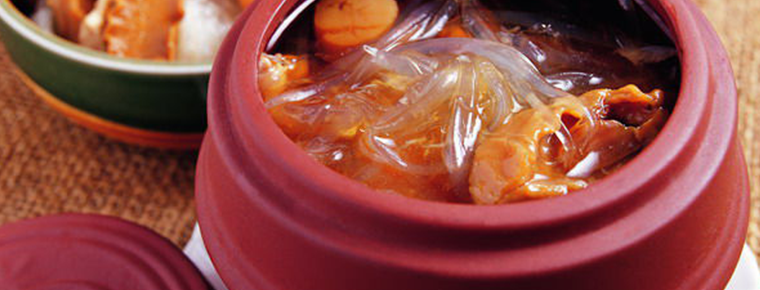
-
Daocheng County
Daocheng county is located in the southwestern edge of Sichuan Province, south of Ganzi. Located in the southeast of the Qinghai Tibet Plateau, the eastern side of Hengduan Mountains..
Views: 101 Time 2018-10-12 -
Mount Emei
Mount Emei is located in Mount Emei, Leshan City, Sichuan Province, China..
Views: 371 Time 2018-10-13 -
Dry fry rice noodles with beef
Dry fried beef river is a Cantonese dish made from materials such as sprouts, river meal and beef. One of the traditional snacks in Guangdong.
Views: 292 Time 2018-11-14 -
Luzhi Ancient town
Yongzhi Ancient Town belongs to Wuzhong District of Suzhou City. It is located in the east of Suzhou City. It is 18 kilometers west of Suzhou City and 58 kilometers east of Shanghai..
Views: 100 Time 2019-02-06 -
Muzhaling Luoyang
Located in Checun Town, Songxian County, Luoyang City, Henan Province, Luoyang Muzhaling is a National Nature Reserve of Funiu Mountain and a world geological park..
Views: 132 Time 2019-02-06 -
Wutaishan Buddhist Music
Wutai Mountain Buddhist music refers to the traditional Buddhist music that has been circulating for a long time in the temples of Wutai Mountain, the top four famous mountains of Chinese Buddhism. Wu.
Views: 123 Time 2019-06-29 -
Legend of Xishi
Xishi is the first of the four beautiful women in ancient China. The legend about Xishi was born at the end of Spring and Autumn Period, and has been enriched ever since. Xishi legend takes the war be.
Views: 159 Time 2019-07-01 -
Construction Techniques of Traditional Architecture of Xiangshan Band
Xiangshan Gang's traditional architectural construction techniques, local traditional handicraft techniques in Suzhou City, Jiangsu Province, one of the national intangible cultural heritage..
Views: 108 Time 2019-07-03 -
Xingtai plum blossom boxing
Plum Blossom Boxing is also called Plum Blossom Pile and Plum Blossom Boxing. One of the traditional Chinese martial arts. For the convenience of drilling, drilling on the ground is more extensive, kn.
Views: 135 Time 2019-07-08 -
Ming opera style
On May 20, 2006, Yiyang Opera was approved by the State Council of the People's Republic of China to be listed in the first batch of national intangible cultural heritage, numbered IV-5..
Views: 164 Time 2019-07-13 -
Yibin science and technology
In 2019, there are 34 new high-tech enterprises, 13 provincial science and technology achievements transfer and transformation demonstration enterprises, 2 provincial science popularization bases and 6 Municipal Science Popularization base.
Views: 314 Time 2020-12-18



